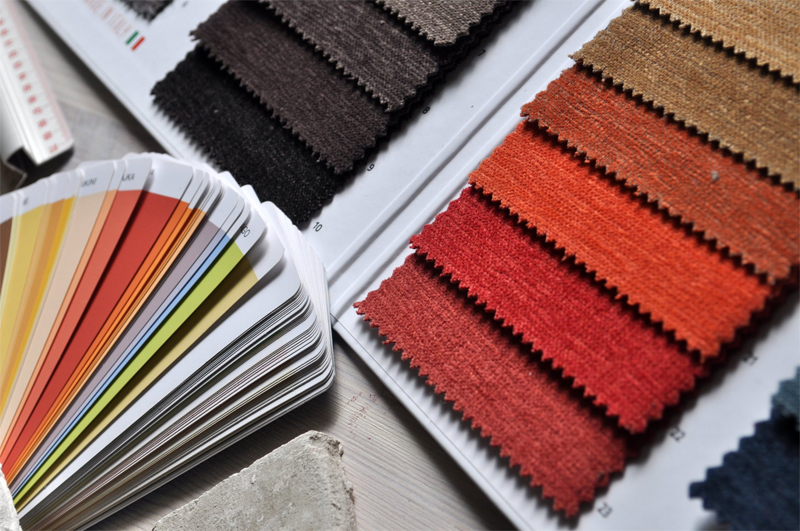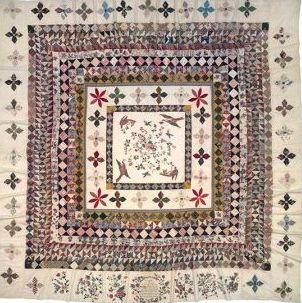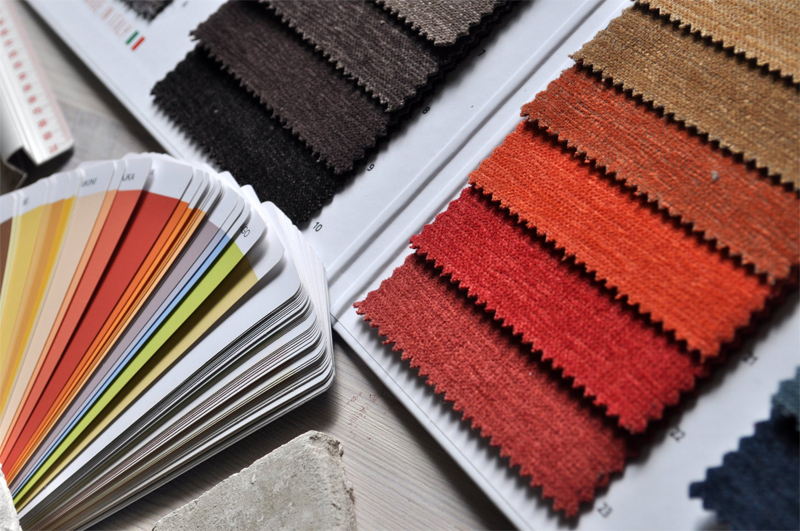The Rajah Quilt

Image source website
Compared to other countries around the world, Australia has a very small antique quilt history and legacy, especially when you read the quilt histories from England and the US. But nevertheless, we do have some very interesting quilts that have been made in the past and reflect uniquely on the formation of our nation and its people. Interestingly the most famous quilts are those that have been created under great adversity, similar to the way Australia was conceived (excluding the history of our first Australians – Aborigines).
One quilt I would like to focus on is called the “Rajah Quilt”. I have had a love affair with this quilt ever since I first saw it in a book. I have been swept up by the incredible story of its making and its eventual recognition as a unique Australian treasure from our very first beginnings.
Back in the 1870’s in England, the prisons were brimming and overflowing with convicts who had been sentenced to spend at least 7 years and up to life behind bars. England could not afford to keep these convicts and needed to “offload” them in another location. Captain James Cook in 1770 had discovered the eastern coast of Australia and so the government of the day decided to transport this convicts, together with enough supplies to enable them to settle and make a life for themselves. So over the next 50 years or so, convicts were sent to Australia from England to a number of different convict settlements in Australia.
It was in 1841 that the transport ship The Rajah set sail from England with convict women from England and Ireland. Many of these women had no skills whatsoever and as a result of hard times had resorted to the oldest profession in the world to feed their families. This was a concern to a group of Quakers who called themselves ‘British Ladies Society for the Reformation of Female Prisoners', and was led by Elizabeth Fry. This group of women advocated the idea of convicts doing something to occupy them on their long trip around the globe to Australia, and by doing so avoiding the men’s decks where they would have the opportunity to earn money. So Fry’s women supplied each and every female convict with a package of sewing items and tools, in the hope that they would learn some sewing skills that would stand them in good stead on their arrival in the new colony.
There were a few “free settlers” accompanying those women on the Rajah; a Kezia Hayter was one of them. She and a few of the convicts who were skilled needlewomen decided to pool their supplies and make a quilt to be presented to the 'British Ladies Society for the Reformation of Female Prisoners' in gratitude of their efforts to help the convicts.
The Rajah quilt was made on the long journey to Australia. The quilt is a very big coverlet, approximately 4 yards square and contains many thousands of cut triangles and squares. The centre panel holds a very elaborate broderie perse pattern which was very typical of the style of the day. A dedication was included on the bottom of the quilt, which was delicately sewn in silk embroidery thread. The dedication is to the ladies committee and the inscription reads:
Convict ship committee.
This quilt worked by the Convicts
of the ship Rajah during their voyage
to van Diemans Land is presented as a
testimony to the gratitude with which
they remember their exertions for their
welfare while in England and during
their passage and also as proof that
they have not neglected the Ladies
kind admonition of being industrious.
June 1841
The quilt was presented to the wife of the Governor of Tasmania, Lady Jane Franklin, who would return the quilt to England. The quilt then simply disappeared for over the next almost 150 years when it was discovered in an attic in a home in Scotland. Luckily the quilt was recognized as a significant Australian treasure and was returned and purchased by the Australian government in 1989.
The quilt is placed on display very infrequently, as it is very fragile and easily damaged. I have been lucky to see this quilt a number of times and for me, it is the most inspirational quilt I’ve every seen.
A visual tour of the Rajah Quilt

Related Articles
Editor's Picks Articles
Top Ten Articles
Previous Features
Site Map
Content copyright © 2023 by Judie Bellingham. All rights reserved.
This content was written by Judie Bellingham. If you wish to use this content in any manner, you need written permission. Contact Judie Bellingham for details.




